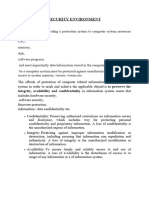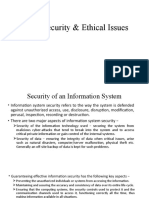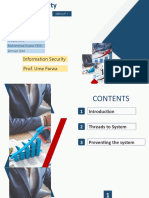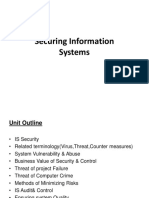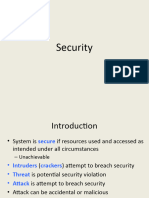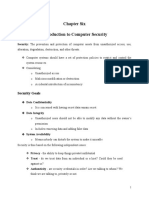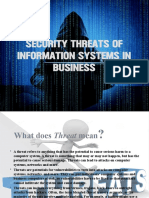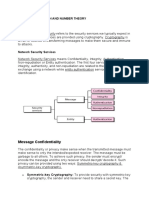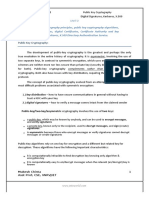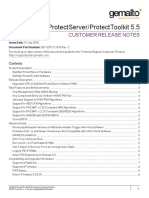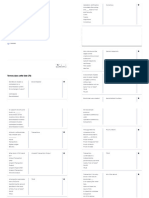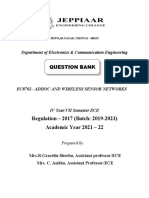0% found this document useful (0 votes)
9 views9 pagesOS - Unit5 - System Security
The document discusses the importance of system security, outlining various threats and attacks that can compromise a computer system's confidentiality, integrity, and availability. It categorizes threats into program and system threats, detailing specific types such as viruses, Trojan horses, and worms, as well as security measures like firewalls and cryptography to protect against these threats. Additionally, it explains different types of cryptography and firewalls, emphasizing their roles in securing information and network traffic.
Uploaded by
cseboys2026Copyright
© © All Rights Reserved
We take content rights seriously. If you suspect this is your content, claim it here.
Available Formats
Download as PDF, TXT or read online on Scribd
0% found this document useful (0 votes)
9 views9 pagesOS - Unit5 - System Security
The document discusses the importance of system security, outlining various threats and attacks that can compromise a computer system's confidentiality, integrity, and availability. It categorizes threats into program and system threats, detailing specific types such as viruses, Trojan horses, and worms, as well as security measures like firewalls and cryptography to protect against these threats. Additionally, it explains different types of cryptography and firewalls, emphasizing their roles in securing information and network traffic.
Uploaded by
cseboys2026Copyright
© © All Rights Reserved
We take content rights seriously. If you suspect this is your content, claim it here.
Available Formats
Download as PDF, TXT or read online on Scribd
/ 9










